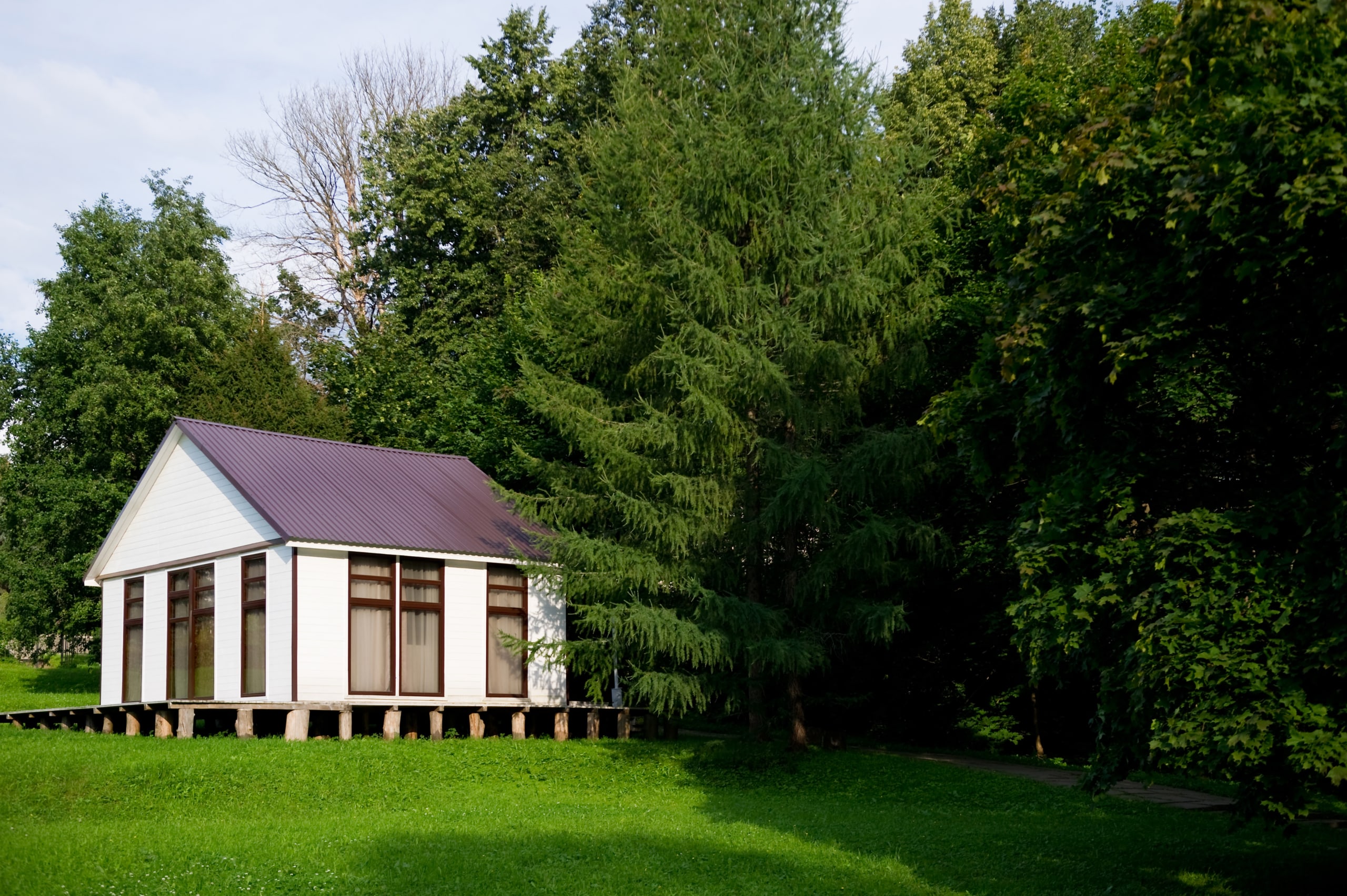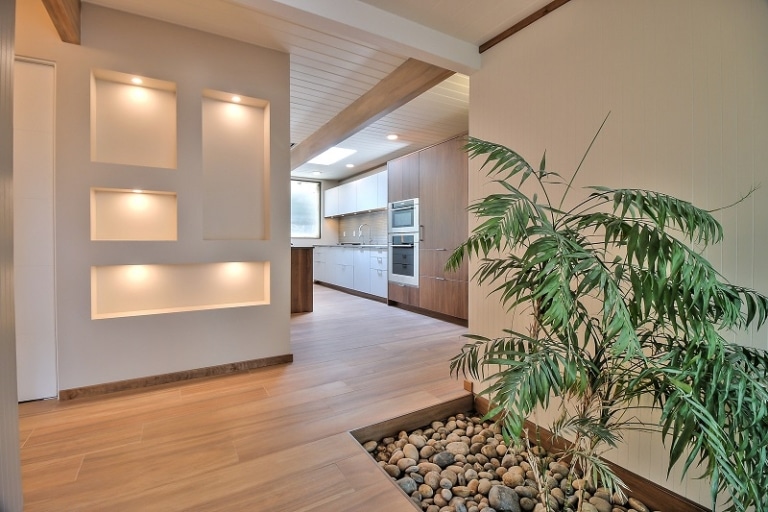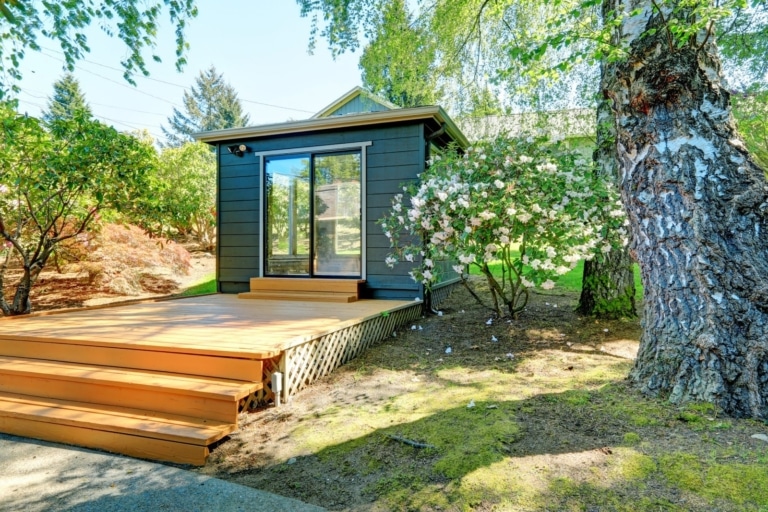ADU California: All of Your Questions Answered
Are you a homeowner in California with spacious property or a large backyard? Wondering if an accessory dwelling unit (ADU) might be suitable for you and your family? Well, you’re in the right place! In this blog post, we’ll answer all of the most frequently asked about ADUs in California. We’ll cover everything from what they are to how they can benefit your family.
So whether you’re just starting to learn about ADUs or you have specific questions, read on for answers! And if you decide that one of these AUDs is right for your home, get in touch with us at Acton ADU California! We’ve been successful home builders for the past 30 years, and during that time, we’ve focused our skills on building top-of-the-line ADUs.
What Exactly is an ADU?
An Accessory Dwelling Unit, or ADU, is a secondary living unit on a property that includes a primary residence. California law defines an ADU as “a residential unit that provides complete independent living facilities for one or more persons, including permanent provisions for living, sleeping, eating, cooking and sanitation.”
ADUs can be either attached to the main house or detached from it, and they can be either attached, interior or exterior units. Attached ADUs are generally added onto the primary home, while interior ADUs (or Junior ADUs) are typically located within the existing floor plan of the house, and detached ADUs are built as independent structures separate from the main house. Detached ADUs are frequently the most popular for both valuation and long term investment reasons as well as over all privacy.
Why Should I Build an ADU?
Having an ADU on your property can benefit you in many ways. The most obvious benefit is that it gives elderly family members a place to stay. This can be a great situation for everyone because it lets older relatives keep their independence while still being close to their families. Not to mention that it can give adult sons and daughters peace of mind if they worry about the safety and health of their parents.
ADUs can also help teens and young adults who are in college. For example, if your child goes to college in another city, it can be the perfect place for them to stay when they come home for summer break. It can also give your teens a sense of independence and privacy, which can be very helpful when they are growing up. Not to mention when school is over, an ADU is a great place to get off the ground.
With a detached ADU, you can finally get some extra peace and quiet. ADUs can also provide a great night of sleep for any guests and friends that spend the night. The privacy factor makes ADUs a wonderful solution for long-term guests. Plus, ADUs have their own private entrance, so you don’t have to worry about people coming into your space without your permission.
What’s the Difference Between an ADU and a Guest House?
An ADU is a secondary living space on a single-family lot that includes its own kitchen, bathroom, and sleeping area. ADUs are not additions. An addition is simply an additional room attached to a home, or some times an outbuilding. Additions rarely have bathrooms, never have kitchens and are usually little more than an extra bedroom and office area. ADUs are completely independedn homes..
ADUs must meet all of the California Building Code requirements for a second dwelling unit, whereas an addition does not have to meet those same requirements.
How Personalized Can I Make My ADU Build?
There are plenty of different ways you can personalize your ADU build in California, especially in the bay area of Califorinia. The main choices you have are:
- Choosing the layout of your unit.
- Selecting the exterior finishes, fixtures, and design.
- Customizing the interior to your specific needs and tastes.
When it comes to the layout, you have flexibility as far as your property, and local laws permit you. You can design a variety of configurations and even split the unit into multiple stories if you wish to, though our specialists here at Acton ADU California recommend sticking to single-story units. There are no real limits to your design other than size (and some times plumbing based on your specific property’s situation, so it really comes down to what suits your family’s needs the best.
As for exterior finishes, you can again choose from a variety of options. You might opt for a more traditional look with siding and brick or go for a more modern aesthetic with stucco or stone. And there are endless possibilities for fixtures and trim, from simple to ornate. In our experience, 9/10 homeowners are interested in matching the visual style of their main home.
Finally, when it comes to the interior, you can really make it your own. You can choose from various flooring options, paint colors, and finishes. Acton ADU’s design team has curated packages that make the interior selection process easy.
So, how personalized can you make your ADU build? The answer is: very! With so many options available, you can truly make your unit a unique part of your family home.
How Do You Legally Build an ADU?
Building an ADU in California generally follows these basic steps:
- Determine if you are eligible to build an ADU on your property. To be eligible, you must own a single-family home that is in compliance with local zoning ordinances. There’s a lot that goes into this, so take your time or hire a partner with ADU experience to validate your project. Site conditions, challenges, and navigating jurisdictions isn’t easy and can greatly impact your project’s budget. In fact, nothing impacts a budget more than a property’s unique requirements.
- Obtain the necessary permits from your local municipality.
- Hire a licensed contractor to build your ADU.
- Once the ADU is built, register it with the city or county in which it is located.
- Enjoy your new “granny flat” or “in-law suite”!
For more in-depth details on the logistics and legalities of building an ADU, the State of California government website provides a ton of helpful information.
How Much Room is Required to Build an ADU?
An ADU in California needs a minimum of 150 square feet of space to be built. This is typically about the size of a small bedroom or small studio apartment. So if you’re planning on adding an ADU to your home, make sure you have enough space to at least meet this minimum requirement!
Local governments can set minimum and maximum unit sizes for both attached and detached ADUs through an ordinance. But the maximum unit size is at least 850 square feet, and ADUs with more than one bedroom must be at least 1,000 square feet. For local governments that don’t have laws relating to ADUs, the maximum size of a new detached unit is 1,200 square feet, and an attached ADU can be up to 50% of the size of the main house. However, it important to note that this can be different depending on your city or jurisdiction, as not all municipalities adopt statewide ADU regulations at the same time.
How Long Does it Take to Build an ADU?
It typically takes around 3-4 months to physically build an ADU California. However, that timeline can vary by a matter of months, depending on the size and complexity of the project, as well as the permitting and design processes. The average ADU project from feasibility to design, to permits, to construction can range from as little as 8 months to as much as a year. Good communication between the homeowner and ADU builder is important so that the timeline for your specific project can be planned out. No two ADU projects are the same, after all.
If you’re considering building an ADU, we recommend getting started on the research and planning process as soon as possible. Then, once you have a clear vision for your project, you can begin working with an experienced contractor to get an accurate timeline, throughout site validation, and estimate for the build.
What is the Total Cost of Building an ADU?
There are a number of factors to consider when determining the cost of building an ADU California. Of course, the size and location of the unit will have the most significant impact on the overall cost. However, other factors, such as finishes and materials, can also add to the price.
The median cost of an ADU in California is around $180,000. However, costs can range from $180,000 to $1,000,000 or more depending on the scope, site conditions, and size of the ADU. Building an ADU in San Jose, or the Bay Area is obviously more expensive than building an ADU in the central valley, so that is also something that should be taken into consideration. One thing is clear. It is vital to work with a qualified contractor to get an accurate estimate of the costs for your specific project. No two ADU projects are the same and most budgetary considerations have to do with the site work, not just the building itself.
In addition to the price of construction, there are also other costs to consider when building an ADU. These include permit fees, utility hookups, and landscaping. These additional costs can add up to $10,000 or more to the overall cost of the project.
If you are considering building an ADU, it is crucial to understand all of the costs involved.
Can an ADU be Rented or Leased?
Yes, an ADU can be rented or leased in accordance with local laws and ordinances. However, most ADUs are built for multiple reasons at the same time, often directly involving the property owners family: elderly relatives, our parents, our kids, and hosting long-term family guests.
An ADU is much more than a long-term profit incentive or asset to substantially increase the value of your property. ADUs are more often than not apart of your home where memories can be made, and loved ones can live happily right next door.
How Will an ADU Affect My Insurance Policies?
Adding an ADU to your property can affect your insurance policies in a few different ways. Your homeowner’s insurance may increase since you’re effectively adding another dwelling to your property. You’ll also need to make sure that your ADU is properly insured against things like fire, theft, and liability. You may be able to add it to your existing policy or get a separate policy for it. Speak with your insurance agent to figure out the best option for you.
How Do ADUs Impact the Environment?
There are a number of ways that ADUs can positively impact the environment. One way is by providing additional housing options that are more environmentally friendly than traditional, much larger homes. Also, ADUs built with sustainable materials and energy-efficient appliances can help reduce the overall carbon footprint of a community.
Another way that ADUs can help the environment is by promoting water conservation. Many ADUs are equipped with low-flow toilets and shower heads, which use less water than traditional fixtures.
ADUs can also have a positive impact on local wildlife. For example, by providing additional housing options near urban areas, ADUs can help to reduce the amount of land that is developed for housing. This can help to preserve natural habitats and allow wildlife to thrive.
Can People of All Ages Live in ADUs?
Yes, people of all ages can use and live in ADUs in California. Additionally, because ADUs are attached to or located on the same property as the primary residence, occupants have easy access to the main house and all its amenities. This is a big plus for families with young children or elderly family members who may need assistance with everyday tasks. Families grow and change over time, and your ADU will do the same to accommodate your family during every stage of life.
If I Decide to Sell My House, What Will Happen to the ADU?
If you sell your house in California, the ADU will be included in the sale. Since your main home and the ADU exist on the same property, one can’t legally be sold without the other. The new owner will be responsible for maintaining the ADU and complying with all applicable laws and regulations. It will be up to the owner to do what they please with the unit. So be sure to keep this in mind if you think selling your current home is the best choice for your family.
Who Should I Call to Get Started?
We hope that this blog has answered all your ADU California questions. If there is anything else you’d like to know, be sure to give us a call here at Acton ADU California. We are based in Campbell, California, and serve the greater South Bay area with pride. When we work together on your new ADU, we establish our relationship on mutual respect and trust in order to ensure top-notch customer service and outcomes.
So, why are you still waiting? Contact us right away to get started on your family’s new accessory dwelling unit!







